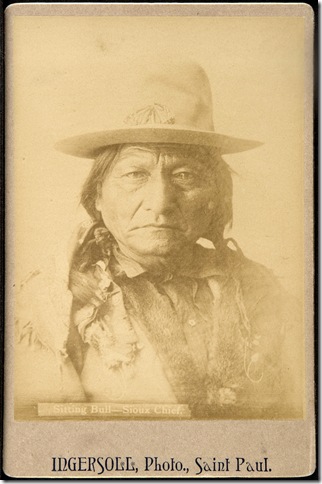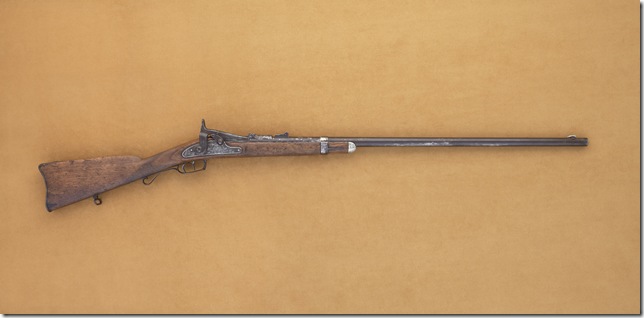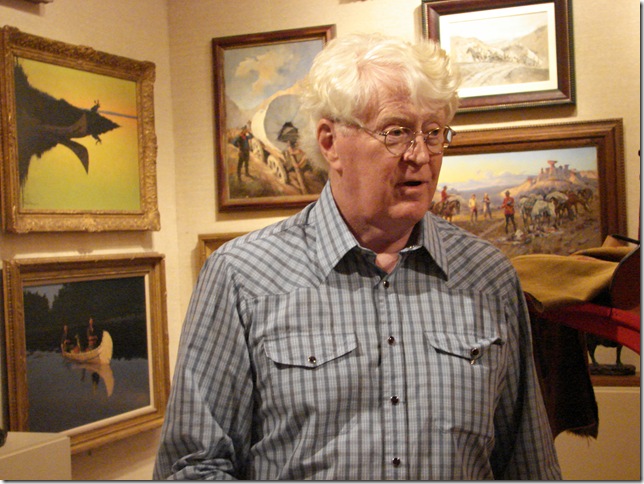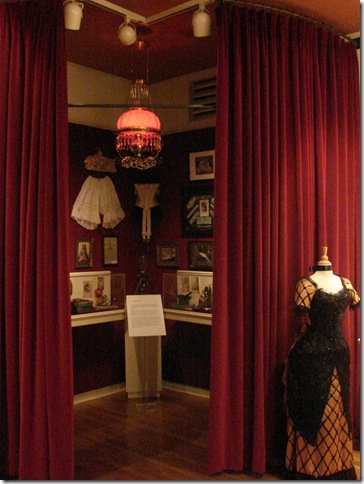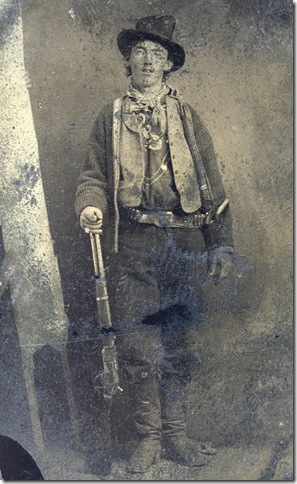You know an exhibit is extraordinary when the woman standing next to you, who happens to be Elizabeth Broun, the Margaret and Terry Stent director of the Smithsonian American Art Museum and the Renwich Gallery, says this: “I’m blown away. We have a wonderful collection, but this puts it to shame.”
That was how it was during a recent preview for Recapturing the West: The Collection of William I. Koch, now at the Society of the Four Arts until April 15.
Koch was on hand to provide a guided tour of the show, culled from his collection, which is so vast that — though there are over 500 items on view — this is only a small sampling of the art, antiques and artifacts that he has accumulated during the 30 years he’s spent collecting art from America’s West.
There are items here that inspire giddy awe, such as Custer’s “stand-alone,” which was created by his wife and is said to be the same flag flown at Little Big Horn in 1876, and the star worn by Wyatt Earp, which reads, “Constable.” There’s a band of fully decked-out cowboy mannequins checking you out as you walk through the entrance door.
Koch, who provided the lion’s share of the curatorial direction, in conjunction with his collection’s permanent curator, Natasha Khandekar, has created a thoroughly comprehensive exhibit. “It’s all the greatest artists and all the great material and all of the fabulous Indian pieces,” Broun said. “So often Western collections are one side or the other, but he’s got all of it.”
The exhibit overwhelms the gallery space at the Four Arts, which is not large enough to showcase all of these treasures, nor to do some of them, which in a larger space might have a wall, or room, of their own, full justice — such as the restored U.S. Mail stagecoach, which rests in the center of one of the galleries. But the layout is fun and it works to keep the viewer engaged. It also provides a rare opportunity for close-up viewing of some incredible objects — guns, clothing, paintings, saddles, corsets — though it can be daunting.
Though it’s very possible to see this exhibit in one viewing, if you’re a true history buff, it’s advisable to return. Perhaps tackle half in one session and the other half a second time. That would be the only possible way to contemplate each item individually, as well as absorb the enormity of the entire show. The Four Arts even opened one gallery normally used for storage to provide additional space.
The galleries have been divided into the following sections: Migration and Economic Growth; Native American Culture; Mining; Cowboy Life and Women in the West; Outlaws and Lawmen; Brothel & Saloon; and Post Civil War and Indian Wars. There’s even a collection of wagons and coaches displayed on the gallery lawn outside.
Paintings and artifacts are hung on the walls in Salon style, which means they cascade down from the ceiling, which, actually, is also being used. There are articles of Native American Indian clothing hanging from it in clear plastic cases.
More than 80 percent of this collection has not been seen before. After this exhibit ends the majority will permanently reside in a private Western town that Koch is building in Colorado for his family and friends. That facility will not be open to the public, so one shouldn’t miss the opportunity to see this exhibit. It might be one’s only chance to see some of these objects.
“What we’ve done here is try to introduce people to the West before the white man came, and if you look at it we put up some paintings that virtually idealize it,” Koch told reporters. One of these was Mountain Lake by Albert Bierstadt, a stunningly luminous work that demonstrates the idyllic, and sublime, beauty of the American West. There is also quite a bit of Native American Indian apparel and tools of everyday use, as well as paintings by Frederic Remington and paintings and bronzes by Charles Russell.
Beyond merely collecting the work from this era, Koch proved that he had quite a lot of historical information in his head. He provided an enthusiastic running commentary throughout the tour, pointing out interesting facts about various items. “Remington hated anyone that wasn’t white,” Koch said. “He made the Indians into savages, whereas Russell became a night herder so he could paint during the day and he glorified the Indians and made them noble savages.”
In certain areas, Koch installed environments, such as in one corner where he recreated an entire general store. There are plenty of branded products and historic signs, not just here, but throughout.
In one gallery, he created an entire Western saloon, including a fully equipped bar and a red-velvet-curtain-enclosed brothel in the corner, which contained corsets and erotic photos. “My wife hates this stuff,” Koch quipped.
Koch began collecting Western art because it reminded him of happy memories he has of his father’s ranch where he was raised. “First of all, I grew up in Wichita, Kansas and my father had a ranch outside of it and he would take me out every weekend when I was a young boy. I just loved being with my father, so I associate that with him,” he said.
The items he collects elicit happy memories of a childhood inspired by parents who were enamored with the Old West. He recalled the placemats showing Charles Russell reproductions that his mother used. “I’d sit there and look at these placemats and see them fighting and I fell in love with the glamour of the Old West.”
Koch has been voracious in collecting Western Art and he’s not nearly done. “I’ve been buying up other people’s collections. I bought a hoarder’s collection who had a museum in Central City, Colorado — a mining museum — and then he died and his heirs were fighting over his estate. Turns out he had five warehouses full of stuff.”
Last year he paid $2.3 million for the only known photo of Billy the Kid, one of the show’s highlights.
“My wife thinks I should be on ‘Hoarders,’” he joked.
Jenifer Mangione Vogt is a marketing communications professional and resident of Boca Raton. Visit her blog at www.FineArtNotebook.com
Recapturing the Real West: Collections of William I. Koch is on view at The Society of the Four Arts until April 15. Hours for this exhibition are Monday through Saturday from 10 a.m. to 5 p.m. and Sunday from 2 p.m. to 5 p.m. A Western film festival accompanies the exhibition, taking place every other Friday. A full schedule is available at www.fourarts.org/films. Admission is $5. For more information call 561-655-7226, or visit www.fourarts.org.
